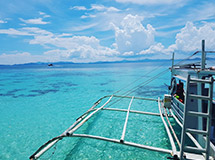
-
МјРЇСІИёСЖШИМі
-
 BUKO PANDAN
BUKO PANDAN 121,071
121,071 -
 Bopis Bopiz a Filipino- Spanish Dish
Bopis Bopiz a Filipino- Spanish Dish 119,600
119,600 -
 BINIGNIT (DESSERT)
BINIGNIT (DESSERT) 100,927
100,927 -
 Pinoy Sweet and Spicy Shrimp94,680
Pinoy Sweet and Spicy Shrimp94,680 -
 Buko Pandan86,962
Buko Pandan86,962 -
 Meatball [Bola -bola ] a Filipino Dish73,984
Meatball [Bola -bola ] a Filipino Dish73,984 -
 PIZZA CRAVINGS IN CEBU73,435
PIZZA CRAVINGS IN CEBU73,435 -
 FILIPINO SEAFOOD SINIGANG72,489
FILIPINO SEAFOOD SINIGANG72,489 -
 PUTO MAYA in the Philippines70,912
PUTO MAYA in the Philippines70,912 -
 Kalamay Sweet Delicacy in Philippines -Bohol68,394
Kalamay Sweet Delicacy in Philippines -Bohol68,394







 ЧЪРкДхФФ ОпАЃЛѓДу ПРЧТ
ЧЪРкДхФФ ОпАЃЛѓДу ПРЧТ 12ГтПЌМг МвКёРкИИСЗ 1РЇ
12ГтПЌМг МвКёРкИИСЗ 1РЇ
 ГЛАд ИТДТ ОюЧаПј УЃБт
ГЛАд ИТДТ ОюЧаПј УЃБт
 ИЎОѓ ЧаБГ ЙцЙЎБт
ИЎОѓ ЧаБГ ЙцЙЎБт
 СжИЛПЁ ГЛАЁ ОЕ КёПыРК?
СжИЛПЁ ГЛАЁ ОЕ КёПыРК? УжАэАЁМККё РЬКЅЦЎ СёБтБт
УжАэАЁМККё РЬКЅЦЎ СёБтБт
 ЧіСіПЁМЕЕ ЧЪРкДхФФ!
ЧіСіПЁМЕЕ ЧЪРкДхФФ! ЧіСіПЁМ АЁДЩЧб
ЧіСіПЁМ АЁДЩЧб









 ЧЪРк ЦЏБо Ч§ХУ! ФСНУОюСі МКёНК
ЧЪРк ЦЏБо Ч§ХУ! ФСНУОюСі МКёНК




